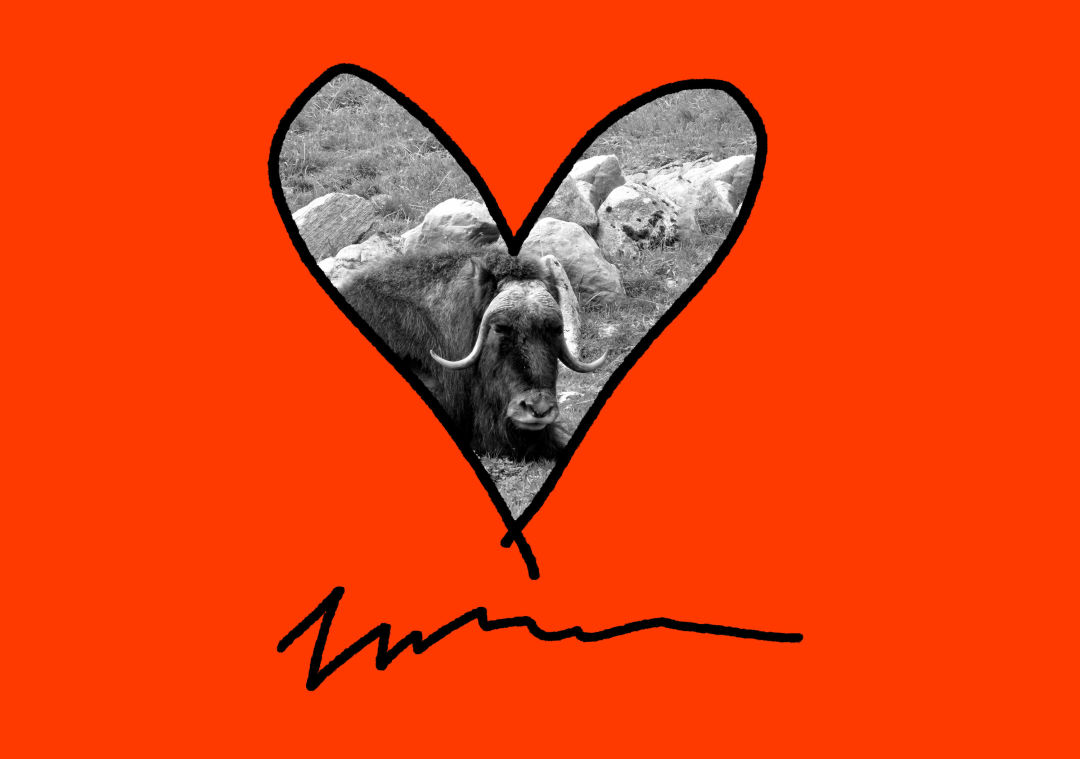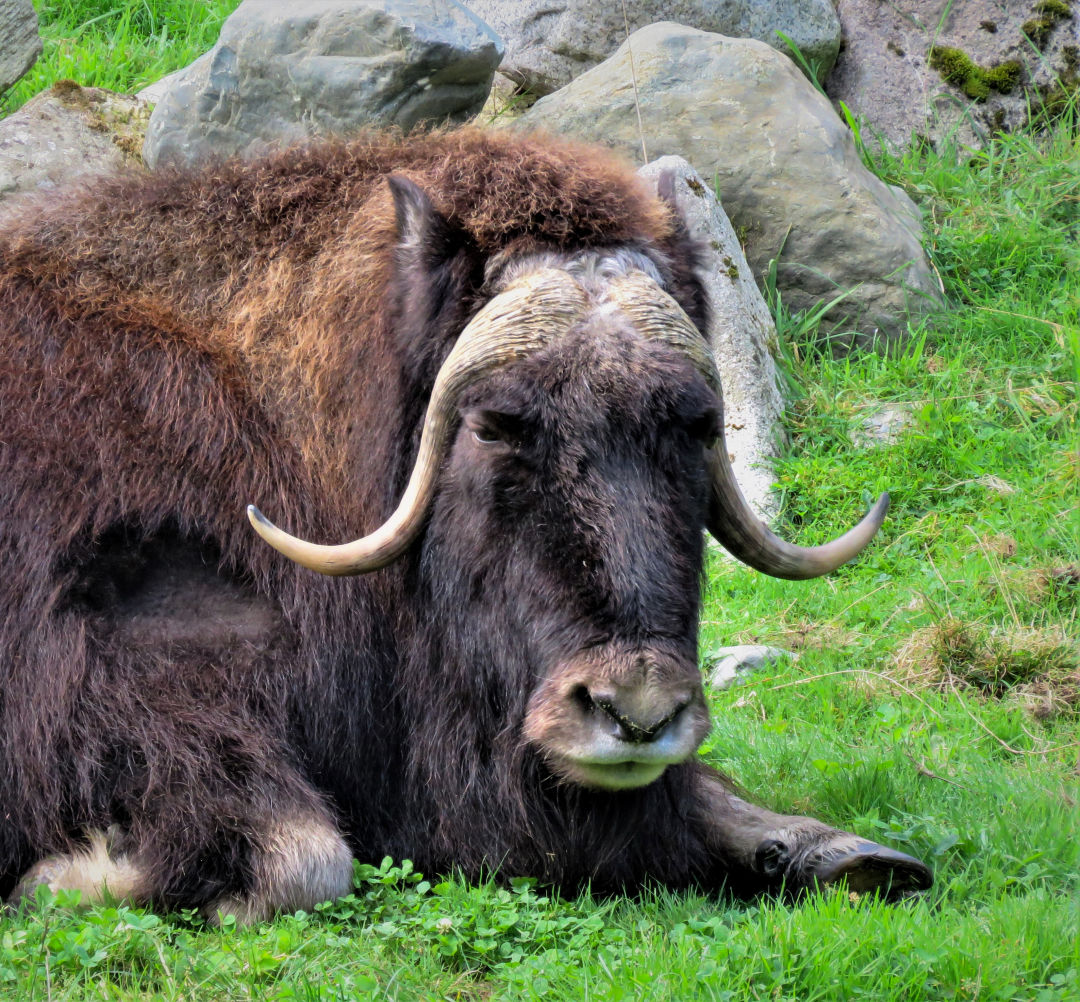Love Letter: The Muskoxen at Point Defiance Zoo Are Smelly and Steadfast

Image: Seattle Met Composite and Stephen Pawlawski/iStock
I’ll be honest, I never thought about muskoxen before I moved to Tacoma. I was, at most, vaguely aware of their existence as a species. But much like the muskox itself (did you know it has two layers of fur to withstand arctic winter conditions?), life is full of surprises.
For example, an unsuspecting visitor to Point Defiance Park might be surprised to look out their car window and see, over a not-very-tall fence, a pair of regal, shaggy creatures lazing around in the grass. These are Charlotte and Hudson, the only residents of the Point Defiance Zoo and Aquarium who you can comfortably see from outside of its confines.
Somehow, the muskoxen of Point Defiance have become my personal shorthand for stability, my reminder that everything is okay. During the early days of Covid, Point Defiance became a regular destination for our family. It’s a giant park with lots of space and lots to do. Stopping to gaze at the muskoxen over the fence became a regular part of that experience: not quite a ritual, but a reliable moment when those were in short supply.
Then the zoo opened back up—masks on, one-way foot traffic only—and the muskoxen, whose enclosure came toward the end of the winding path through the grounds, became a landmark signifying that our visit was almost over. We had made it.

Charlotte the Muskox at Point Defiance Zoo…just being there.
Image: Stephen Pawlawski/iStock
I asked my kids what they like about the muskoxen, and they gave two equally good answers: the first was that they smelled bad, and the second was that they were always there. Unlike the nearby polar bear, arctic fox, and red wolves, the muskoxen were never hiding. They just hung out, eating grass, looking around. You could always see them. (Muskoxen are not migratory, and they don’t hibernate; they really are just always there.)
Muskoxen shed their underlayer of fur in the summertime. They huddle together for warmth in the winter. They adapt. There’s something reassuring about an animal that is built to withstand harsh conditions and stick together. Male muskoxen settle disputes by ramming into each other headfirst at high speeds. But when herds are in danger, adults work together, forming tight circles to protect their calves from predators.
They are stubborn and maybe illogical but ultimately in it together. What could be more relatable than that?




